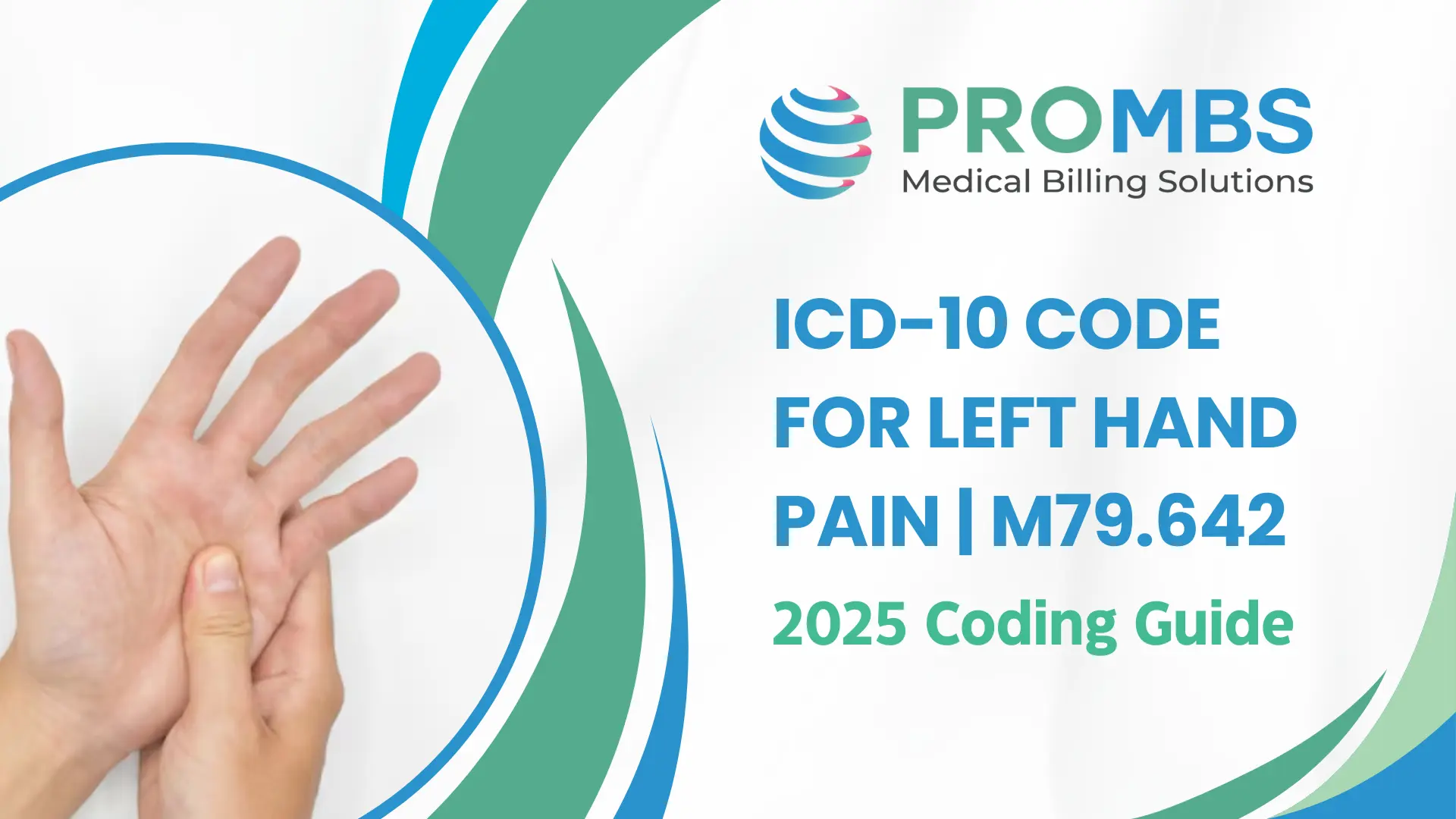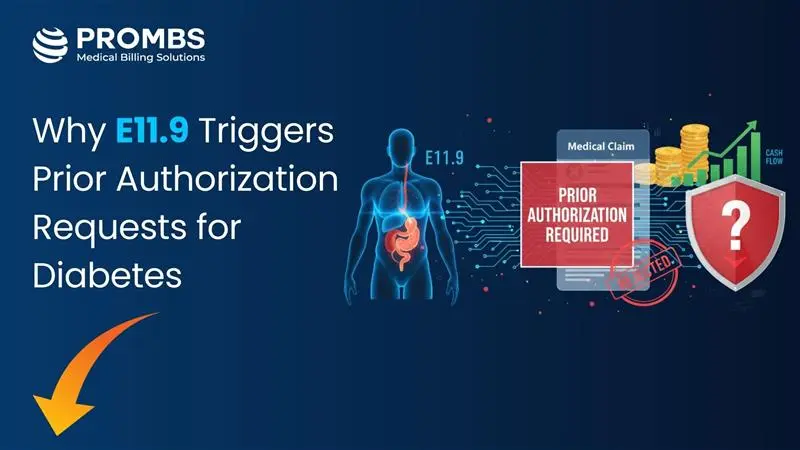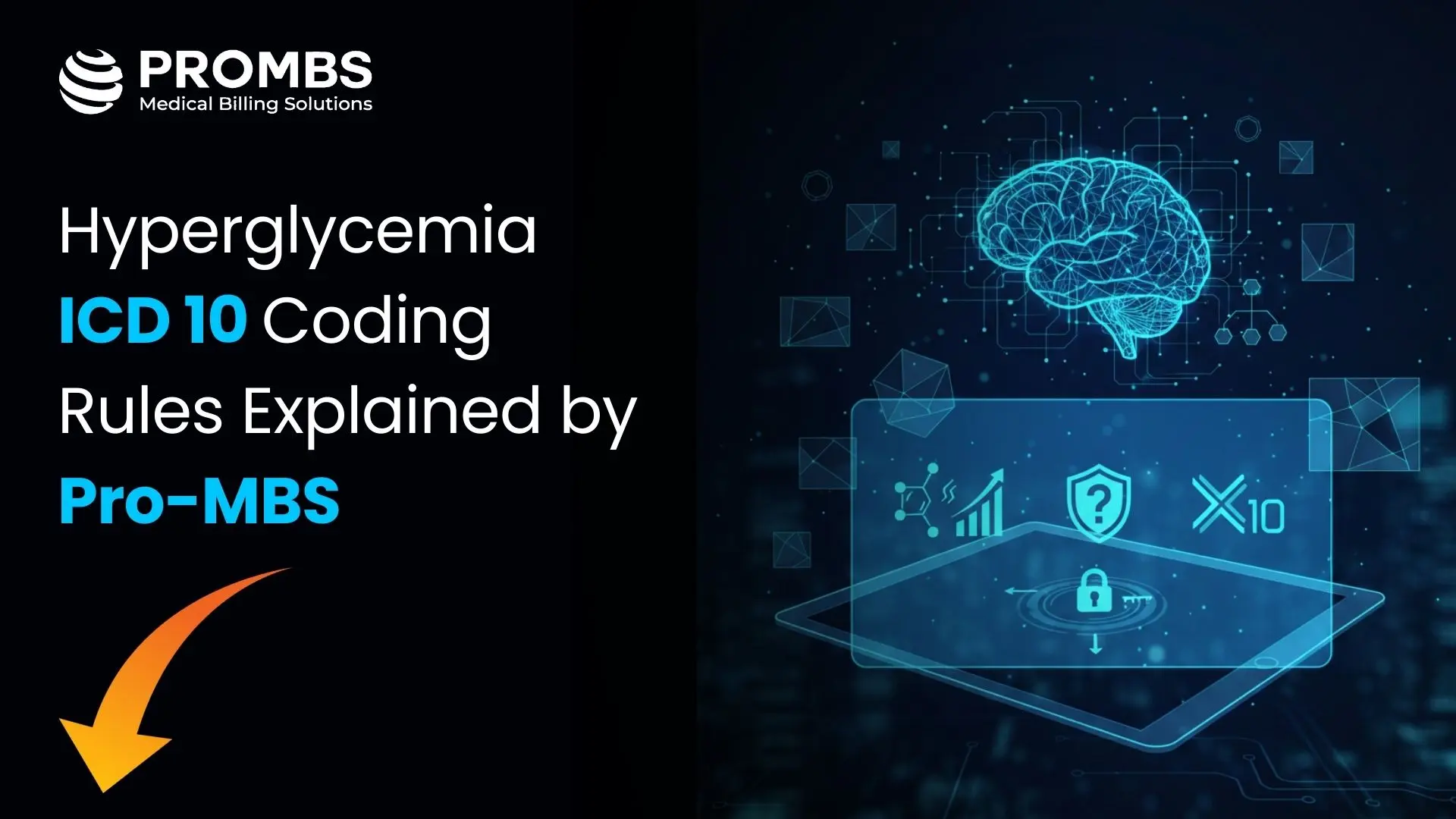Accurate coding plays a critical role in ensuring smooth medical billing and proper reimbursement. Among the commonly used codes in musculoskeletal care is the ICD-10 code for left hand pain (M79.642). Applying this code correctly not only supports medical necessity but also helps prevent unnecessary claim denials.
This article provides a comprehensive overview of left hand pain, exploring its symptoms, common causes, appropriate ICD-10 and CPT coding, documentation practices, and strategies to reduce payer rejections.
What Is Left Hand Pain and What Are Its Symptoms?
Left hand pain refers to discomfort, tenderness, or aching sensations localized to the left hand. It can range from mild soreness to severe, debilitating pain.
Symptoms associated with left hand pain include:
- Swelling or stiffness in the joints
- Numbness or tingling in the fingers
- Burning or throbbing pain
- Reduced grip strength
- Limited range of motion
Since the symptoms can overlap with multiple conditions, documentation should clearly state whether the pain is nonspecific or linked to a diagnosed disorder.
What Is the ICD-10 Code for Left Hand Pain?
The official ICD-10 code for left hand pain is:
M79.642 – Pain in left hand
This code falls under the category “Other and unspecified soft tissue disorders, not elsewhere classified.” It is used when documentation specifies pain in the left hand without identifying a more specific underlying condition.

Related ICD-10 Codes for Hand and Upper Limb Pain
For accurate documentation, coders should be familiar with related ICD-10 codes:
| Condition | ICD-10 Code |
|---|---|
| Pain in left hand | M79.642 |
| Pain in left wrist | M25.532 |
| Pain in left upper arm | M79.622 |
| Pain in left finger(s) | M79.645 |
| Pain in left forearm | M79.632 |
When to Use and When Not to Use M79.642
Correct application of the ICD-10 code for left hand pain (M79.642) is essential to ensure claim accuracy, reduce denials, and maintain compliance with payer guidelines. Although the code appears straightforward, its misuse is one of the most common reasons for rejected claims in musculoskeletal documentation. Let’s break down when this code should be applied and when it should not.
When to Use ICD-10 Code for Left Hand Pain (M79.642)
You should assign M79.642 in the following situations:
1- The patient presents with localized pain in the left hand
If the provider documents that the pain is confined to the left hand but does not identify a more specific condition, M79.642 is the correct choice.
Example: “Patient complains of persistent pain in the left hand after repetitive typing, but no fracture or arthritis is diagnosed at this time.”
2- The provider has not yet identified the underlying cause
Often, patients are evaluated for pain before diagnostic imaging or lab tests confirm the root cause. In such cases, coders should use M79.642 to capture the symptom until a definitive diagnosis is established.
Example: “Left hand pain of unknown origin further tests pending.”
3- Documentation specifically states “pain in left hand”
Coders should always code directly from documentation. If the provider’s note explicitly states “pain in left hand,” then M79.642 is the most accurate and compliant ICD-10 code.
When Not to Use ICD-10 Code for Left Hand Pain (M79.642)
You should avoid using M79.642 in these scenarios:
1- When the pain is linked to a specific diagnosis
If the provider identifies the cause of the pain such as arthritis, fracture, carpal tunnel syndrome, or tendonitis, you should code the underlying condition instead of or in addition to M79.642.
Example: “Left hand pain due to rheumatoid arthritis” → use M06.042 (Rheumatoid arthritis with rheumatoid factor of left hand), not just M79.642.
2- When documentation specifies a different anatomical site
Hand pain should not be confused with wrist pain, finger pain, or upper arm pain. Each of these has its own ICD-10 code and must be assigned correctly to avoid claim denials.
Examples:
- Left wrist pain → M25.532
- Pain in left finger → M79.645
- Left upper arm pain → M79.622
3- When laterality is not documented
If the provider only records “hand pain” without specifying whether it is left or right, coders must not assume laterality. In such cases, the correct code is M79.643 (Pain in unspecified hand).
Example: “Patient presents with hand pain” → use M79.643, not M79.642.
Coding Hierarchy Reminder
M79.642 (Pain in left hand) is a symptom code. According to ICD-10-CM guidelines, coders must report the most specific diagnosis available.
- If a definitive condition is documented (e.g., fracture, arthritis, carpal tunnel), that diagnosis should be coded as the primary diagnosis.
- M79.642 may still be reported as a secondary diagnosis to capture the patient’s symptom, but it should not replace a more specific code.
Why This Matters
Misusing the ICD-10 code for left hand pain (M79.642) can result in:
- Claim denials for lack of specificity.
- Audit red flags due to incorrect laterality.
- Delayed reimbursements if insurance carriers request medical records for clarification.
By carefully reviewing provider documentation and applying M79.642 only when appropriate, coders can ensure both accuracy and compliance.
CPT Codes Commonly Paired with ICD-10 Code for Left Hand Pain (M79.642)
When billing for left hand pain, CPT codes are paired with the ICD-10 code to justify medical necessity. Below are common CPT codes, their purposes, and the conditions they typically apply to:
| CPT Code | Purpose | Common Conditions Linked with Left Hand Pain (M79.642) |
|---|---|---|
| 99213 | Office or outpatient visit (established patient) | General evaluation of left hand pain, follow-up for arthritis, tendonitis, or injury |
| 20526 | Injection, therapeutic; carpal tunnel | Carpal tunnel syndrome causing wrist-to-hand pain |
| 73130 | X-ray of hand (3+ views) | Suspected fractures, arthritis, or bone abnormalities |
| 97035 | Ultrasound therapy | Tendonitis, bursitis, or soft tissue inflammation in the hand |
| 97110 | Therapeutic exercises (each 15 minutes) | Rehabilitation for sprains, post-fracture recovery, repetitive strain injuries |
| 73090 | X-ray of forearm | Pain radiating from forearm to hand, suspected fractures or joint involvement |
| 95886 | EMG with nerve conduction study | Neuropathic pain, cervical radiculopathy, suspected peripheral nerve entrapment |
Tip: Correctly pairing M79.642 with an appropriate CPT code not only supports medical necessity but also improves claim approval rates.
Why Do Claims with ICD-10 Code for Left Hand Pain (M79.642) Get Denied?
1. Incorrect Laterality
Laterality is a common pitfall in ICD-10 coding. Since there are separate codes for left, right, and unspecified hands, even a small mistake such as using M79.641 (Pain in right hand) instead of M79.642 will result in a claim rejection. Payers are strict about laterality because the wrong side not only misrepresents the patient’s condition but also raises compliance concerns. Coders must carefully review provider notes to ensure the correct side is captured.
2. Lack of Medical Necessity Documentation
Even if the correct ICD-10 code is used, payers need evidence that the diagnosis justifies the billed service. For example, if a provider documents “hand pain” but does not explain severity, functional limitations, or reason for diagnostic testing, payers may deny the claim due to lack of medical necessity. Strong clinical documentation should always support why the patient’s condition required medical evaluation or treatment.
3. Using M79.642 When a More Specific Diagnosis Exists
4. Missing CPT/ICD-10 Linkage in Claim Submission
Another frequent issue arises when the diagnosis does not match the procedure code. For example, submitting M79.642 with a CPT code for a nerve conduction study, without clear documentation linking the patient’s hand pain to suspected neuropathy, can cause a denial. Each CPT code must have an appropriate diagnosis attached to prove medical necessity. Coders should always confirm that the diagnosis supports the procedure being billed.
5. Outdated Coding Practices Not Aligned with ICD-10-CM Guidelines
ICD-10-CM is updated annually, and payers follow the most current version. Coders who rely on outdated code sets, ignore Excludes1/Excludes2 notes, or fail to apply payer-specific edits may unintentionally submit incorrect claims. Even small errors, like not checking guideline updates, can cause denials. Staying current with coding changes is critical to maintaining compliance and preventing unnecessary claim rejections.
Documentation Tips for Coding Left Hand Pain
Accurate documentation is the foundation of successful coding and reimbursement. Providers must clearly indicate the exact location of the pain simply noting “hand pain” is not sufficient. Instead, the documentation should specify “left hand pain” and ideally describe whether it is localized to a particular area such as the wrist, fingers, or palm. Along with location, it is crucial to record the onset and duration of symptoms, distinguishing between acute pain (short-term, sudden onset) and chronic pain (long-lasting or recurrent).
Equally important are associated symptoms such as numbness, swelling, tingling, or stiffness, as they can help support medical necessity and guide more precise coding. When possible, the cause or mechanism of injury should also be included for example, whether the pain is due to trauma, overuse, or an underlying medical condition such as arthritis. Finally, laterality is critical: documentation must specify whether the pain is in the left, right, or both hands. Coders rely heavily on this level of detail to assign the correct ICD-10 code (e.g., M79.642 for left hand pain) and avoid common errors that can lead to denials.
Coders should always remember to assign codes to the highest level of specificity available in the documentation. This not only prevents claim rejections but also ensures compliance with ICD-10-CM guidelines. Detailed provider notes, combined with accurate coding practices, strengthen the claim’s validity, reduce the risk of denials, and ultimately improve reimbursement outcomes.



